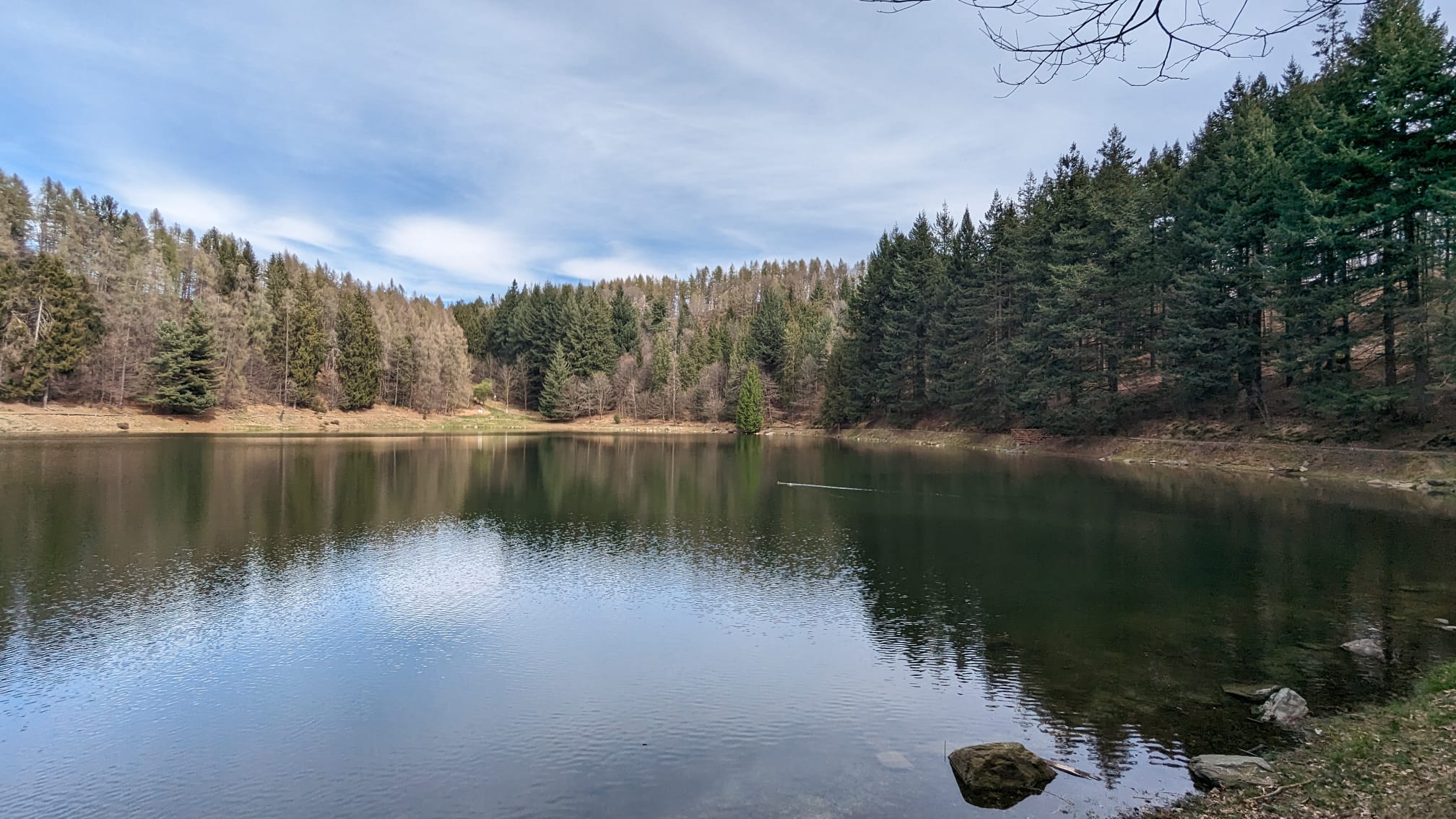
CONIFIR Project
Genetic origin and structural setting of Douglas-fir planted forests in Italy for their management, conservation and valorization
MUR-PRIN 2022 Project - Prot. 20225WRLS3

MUR-PRIN 2022 Project - Prot. 20225WRLS3

Douglas-fir stand surrounding the Meugliano lake (Comune di Valchiusa, TO, Italy) in winter (courtesy of: P. Iovieno, CNR-IBBR, Italy).
Douglas-fir is a valuable non-native tree species in Italy from an economic point of view and a very promising species in relation to global climate change, given both the ability to cope with drought events and the high rate of atmospheric carbon sequestration. The analysis of genetic diversity of populations is key for the development of an explanatory and predictive modelling of growth performances in different habitats. Studies focused on genetic variation are requested to assess and predict species’ adaptation, survival and fitness (Ahrens et al. 2020). CONIFIR will implement a modelling framework aimed to: i) characterise the degree and distribution of genetic diversity of Douglas-fir stands in Italy; ii) evaluate the performance of different spatial sampling techniques in order to derive reliable estimation of genetic diversity both within and among stands and competition indices at stand level; iii) devise the best practices to sample extant Douglas-fir stands as sources of propagation materials; iv) predict the performance of different genotypes across the ecological range in Italy. The development of a georeferenced database on Douglas-fir performances across the Italian range will allow for predicting the phenotypic plasticity of each genotype and quantifying the potential impacts of climate change on species’ abundance and resilience. Additional goals are:
The main objective of the project is to quantify the available genetic diversity across Italian Douglas-fir stands and provide a novel research approach for non-native though naturalised forests. Genetic analyses will throw light on a possible “founder effect” in the introduced populations, with loss of genetic variation and increased inbreeding, which may impair the evolutionary and adaptive potential of the species. Climatic projections will be combined with newly generated genetic data with the aim of modelling the species' responses to environmental gradients and detecting outperforming genotypes/stands in Italy to be used as sources of propagation material. Several future management scenarios for the Italian Douglas-fir stands will be built based on the 28 variants of UKCP18 projections for 7 future climatic periods between 2021 and 2090 to predict the most likely effects of climate change on the species in Italy. Such information is fundamental to properly design forest management strategies in a changing climate, as well as to prevent further loss of genetic diversity by introducing (whenever needed) new propagation material from additional, multiple source populations.